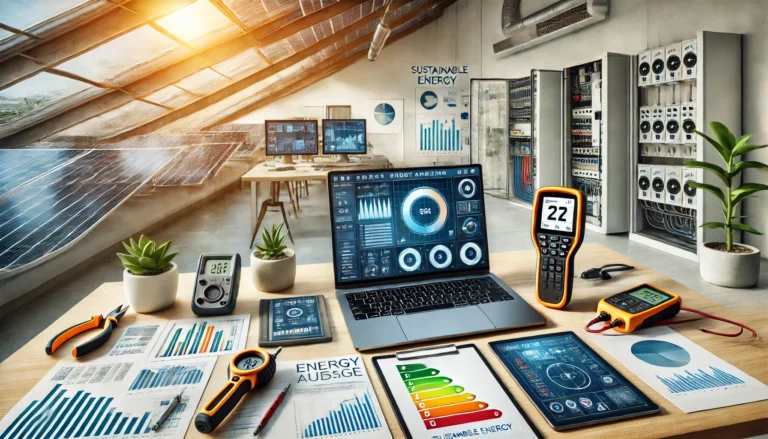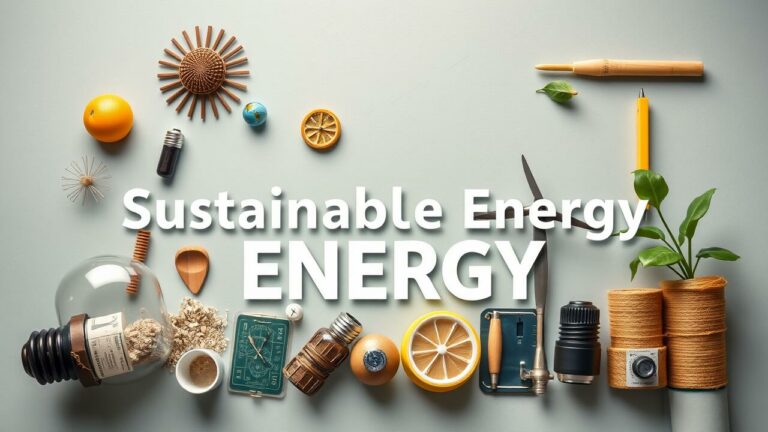Renewable Energy Alternatives
The leap from fossil fuels to renewable energy sources isn’t just a shift; it’s an exhilarating whirlwind of opportunity—an invitation for innovation and sustainable growth. Picture this: solar, wind, hydroelectric, and geothermal energies stepping into the limelight, each flaunting its own set of perks in efficiency, accessibility, and minimal environmental footprint. Solar power? It captures rays from the sun like a magician pulling rabbits out of hats—a clean and seemingly endless resource! And then there’s wind energy, dancing through turbines while leaving behind not even a whisper of greenhouse gases—absolutely vital in our fight against climate change.
But hold on! Embracing these renewable alternatives requires a hefty investment—not just pennies but serious capital—for technology and infrastructure must be fortified. The success of these energetic contenders hinges significantly on breakthroughs in storage solutions and smart grid technologies that could revolutionize how we distribute power with reliability. Seamless integration into our existing energy systems? Absolutely essential if we’re to navigate this transition without hiccups. Let’s not forget the magic words: research and development! By focusing here, we can chip away at costs while scaling up renewables like never before—ultimately paving the way for a truly sustainable energy future that sparkles with potential!
Comparing Fossil Fuels to Sustainable Sources
Fossil fuels—those age-old titans of industrial progress and economic expansion—have served as a steadfast energy reservoir for everything from the rumble of transportation to the comforting warmth of our homes, even powering the very electricity that lights up our lives. Yet, lurking beneath this façade lies a perilous truth: their environmental toll is staggering. They spew greenhouse gases into our atmosphere, a significant contributor to climate change’s relentless march. The processes involved in extraction and consumption wreak havoc on habitats and poison waterways, igniting urgent debates over sustainability’s true meaning.
Enter renewable energy sources like solar, wind, and hydroelectric power—a beacon of hope shining with promises of cleaner alternatives that tread lightly upon our planet. These energies boast an almost limitless capacity for replenishment while leaving far less impact on delicate ecosystems; they resonate harmoniously with society’s escalating plea for sustainable practices.
But the plot thickens! The efficiency and scalability offered by these renewable alternatives pose a formidable challenge to fossil fuel hegemony. Sure, fossil fuels might deliver hefty energy outputs—but their capricious pricing patterns and supply uncertainties can send economies spiraling into chaos. In contrast, renewables are riding high on waves of plummeting installation costs alongside technological leaps that make them increasingly viable for widespread use. As nations scramble to fulfill climate pledges, it’s becoming clear: sustainable energy models not only lessen ecological harm but also bolster energy independence and security.
This gradual shift toward renewables signals more than just an evolution in strategy; it represents a dawning realization that we must reconcile economic appetites with ecological stewardship if we wish to forge a resilient future together.
| Energy Source | Advantages | Environmental Impact | Scalability |
|---|---|---|---|
| Fossil Fuels | High energy output; established infrastructure | Significant greenhouse gas emissions and habitat destruction | Moderate; dependent on extraction and refining capacities |
| Solar Energy | Renewable; decreasing installation costs; low maintenance | Minimal emissions; sustainable; land use considerations | High; scalable for residential and commercial use |
| Wind Energy | Cost-effective; significant energy generation potential | Low emissions; impact on wildlife and land use with turbines | High; adaptable to various geographic locations |
| Hydroelectric Power | Consistent and reliable; established technology | Alter habitats; potential displacement of communities | High; large-scale projects feasible, but location-dependent |
Transition Strategies for Fossil Fuel Industries
As the tides of the global economy ebb and flow towards sustainability, fossil fuel industries find themselves at a crossroads, compelled to weave intricate transition strategies into their very fabric to survive. This isn’t merely about keeping afloat; it’s a clarion call for hefty investments in research and development—innovations that breathe life into cleaner technologies aimed at slashing emissions and boosting efficiency with gusto! Picture this: companies branching out like ambitious trees, tapping into renewable energy sources while maintaining their roots in traditional fossil fuels.
But wait, there’s more! Partnerships with existing renewable energy powerhouses could spark a wildfire of knowledge transfer—an exhilarating dance of ideas that accelerates innovation and catapults these industries into an enviable position within an ever-more cutthroat market landscape.
And what about the workforce? A pivotal shift looms on the horizon as retraining programs spring forth like wildflowers after rain. The current stalwarts of the sector may need to don new hats—upskilling is essential for those pivoting toward roles centered around renewable technologies or mastering cutting-edge energy systems. Collaborating with educational institutions can cultivate bespoke training initiatives tailored precisely to industry demands. These multifaceted strategies not only foster individual career trajectories but also stitch together a more resilient tapestry within the energy sector—a robust entity ready to embrace future challenges head-on while seizing opportunities as they arise!
Industry Adaptation and Workforce Challenges
The fossil fuel industry stands at a crossroads, grappling with formidable challenges as it navigates a whirlwind of change in the energy arena. Companies find themselves compelled to rethink their operational blueprints, weaving renewable energy technologies into the fabric of their strategies while placing sustainability front and center. This metamorphosis isn’t just about pumping money into shiny new tech; it demands a profound reassessment of long-standing infrastructures that have served them well—until now.
Amidst this upheaval, stakeholders must channel resources into research and development if they hope to keep pace with competitors who are increasingly embracing greener practices, all while juggling shareholder expectations for eco-consciousness. The stakes couldn’t be higher.
But wait—the plot thickens! Workforce dilemmas loom large on the horizon as skilled labor migrates from conventional fossil fuel roles to burgeoning renewable sectors. Enter retraining and upskilling programs—vital lifelines designed to guide workers through this transformative maze toward fresh opportunities in an ever-evolving job landscape. Here’s where collaboration takes center stage: industry titans, educational institutions, and government entities must band together like never before to smoothen these tricky transitions for those caught in the crossfire.
And let’s not forget about community engagement! Proactive dialogues with populations dependent on fossil fuel employment are crucial; without them, economic stability could teeter precariously during this seismic shift. The journey ahead is fraught with complexity but ripe with potential—a true test of innovation and resilience awaits!
Future Regulations and Policies
The intricate dance of regulations surrounding fossil fuels is a quest to harmonize our insatiable thirst for energy with the urgent need to safeguard our environment. Picture this: policymakers, armed with an arsenal of stringent emissions standards, are stepping up their game to rein in pollution and nudge us toward cleaner energy alternatives. Among these measures? Carbon pricing mechanisms—think of them as a financial slap on the wrist for carbon emissions—designed to spark industries into embracing more sustainable practices.
But wait, there’s more! The regulatory landscape isn’t static; it’s morphing, evolving to champion innovations in renewable technologies. This ensures that breaking free from fossil fuel chains isn’t just a lofty dream but also an economically sound journey.
As the clamor for sustainable practices crescendos, governments seem poised to roll out even bolder policies aimed at turbocharging energy efficiency and fast-tracking renewable energy adoption. Incentives galore for research and development in clean technologies are popping up like wildflowers after a rainstorm, giving businesses the green light to pivot away from their fossil-fuel crutches. And let’s not forget—the collaboration between public entities and private enterprises will be pivotal in sculpting these policies, weaving together a rich tapestry of economic growth intertwined with environmental stewardship as we navigate this complex transition towards a greener future.
Government Initiatives for Sustainable Energy
Around the world, governments are waking up—no, not just a gentle nudge but a full-on jolt—to the pressing need to shift gears from fossil fuels to sustainable energy sources. A whirlwind of initiatives has erupted, bursting forth with tax credits, grants, and subsidies aimed squarely at both businesses and consumers alike. These financial lifelines are crafted to smash down barriers that have long stood in the way of embracing solar power, wind energy, and other green technologies.
But wait! That’s not all; there’s also an intense focus on turbocharging energy efficiency protocols. It’s like hitting two birds with one stone: slashing our carbon footprints while padding wallets for individuals and organizations across the board.
As if that weren’t enough momentum building up already, regulatory frameworks springing into action aim to smooth out the pathway for adopting sustainable energy solutions. Utility companies now face standards mandating them to weave in a certain percentage of renewable sources into their energy concoctions. The goal? To stir up competition within the marketplace while simultaneously loosening those stubborn chains binding us to fossil fuels.
And let’s not forget about collaboration—oh no! Partnerships with research institutions and private sector innovators are crucial cogs in this machinery driving clean technology forward. It’s all part of a grander vision—a commitment echoing through time towards climate goals intertwined with economic transformation rippling throughout the ever-evolving landscape of energy production.
- Governments are offering tax credits to encourage investment in renewable energy technologies.
- Grant programs are available for both businesses and homeowners to finance solar panel installations.
- Subsidies are being provided to energy companies that invest in green technologies.
- Regulatory frameworks are establishing mandatory renewable energy standards for utility companies.
- Incentives are being created to promote energy efficiency upgrades in residential and commercial buildings.
- Public-private partnerships are being fostered to drive innovation in clean energy solutions.
- Education and outreach programs aim to raise awareness about the benefits of sustainable energy.
Public Perception and Social Responsibility
The spotlight on climate change has dramatically altered how people view fossil fuels. A rising tide of awareness is sweeping through the populace, illuminating the long-term environmental consequences tied to carbon emissions. Educational campaigns and awareness initiatives are not just helpful—they’re pivotal in transforming mindsets about fossil fuel usage. More and more individuals are stepping up to champion sustainable energy alternatives, underscoring a collective urgency to lessen our dependence on these finite resources.
As social responsibility becomes a cornerstone of corporate ethos, firms entrenched in the fossil fuel industry find themselves at a crossroads, compelled to rethink their operational practices. Many companies are now venturing into uncharted territory, seeking routes toward cleaner energy solutions that were once merely aspirational dreams. This burgeoning focus on corporate accountability highlights an urgent need for businesses to synchronize their strategies with environmental objectives. Such a transformation doesn’t just address public unease; it also carves out an advantageous position for companies within a marketplace increasingly driven by sustainability values.
Changing Attitudes Towards Fossil Fuel Use
The tides of public sentiment are shifting, swirling with an increasing awareness of the pressing environmental crises and the specter of climate change looming ever larger. Individuals and communities alike are awakening to the profound, long-lasting consequences tied to our dependence on fossil fuels. This burgeoning consciousness has ignited a clarion call for sustainable alternatives that can’t be ignored. The chatter in public discourse now often crescendos around the urgent need for a transition to greener energy sources—an imperative aimed at curbing those insidious emissions.
In this landscape, grassroots movements and activist organizations emerge as pivotal players, wielding influence over these changing attitudes like skilled conductors orchestrating a symphony of advocacy. The push for policy reforms designed to sever our ties with fossil fuel reliance is gaining momentum across diverse demographics—a chorus united in purpose! Campaigns championing energy efficiency and renewable adoption resonate deeply with younger generations who find themselves increasingly alarmed by their ecological footprints.
This cultural metamorphosis toward sustainability isn’t just idle talk; it propels corporations into introspection about their own energy policies and investments. A palpable shift unfolds within the marketplace itself—one propelled by consumer preferences demanding accountability and action from businesses striving not just to survive but also to thrive in this new era defined by eco-consciousness.
The Role of Fossil Fuels in Emerging Economies
Fossil fuels—the very lifeblood of emerging economies—hold a pivotal sway over their development narratives. These nations, often teetering on the edge of progress, heavily lean on oil, coal, and natural gas to fuel their industrial ambitions and satiate the voracious energy appetites of burgeoning populations. The allure of cheap energy acts as a siren call for investments in infrastructure and manufacturing, propelling economic growth like a rocket shooting skyward. Yet this reliance is not without its dark side; it casts shadows that loom large in the form of escalating greenhouse gas emissions and relentless environmental degradation.
As these countries endeavor to carve out sustainable paths forward, they find themselves entangled in an intricate balancing act—a tightrope walk between capitalizing on fossil fuels’ immediate financial rewards and making the leap toward cleaner energy alternatives. Policymakers and industry magnates are caught in this whirlwind, grappling with an ever-pressing need for energy security while also heeding the global clarion call for carbon neutrality. This interplay breeds tension: how does one maintain robust growth while simultaneously confronting long-term ecological dilemmas? Thus emerges a compelling imperative for these emerging economies—to delve into innovative solutions that harmoniously blend traditional fossil fuel usage with renewable energy sources.
Balancing Growth and Environmental Concerns
Emerging economies often find themselves in a perplexing dance, juggling the urgent pursuit of economic growth alongside pressing environmental dilemmas. As these nations aspire to elevate their living standards, an insatiable demand for energy resources typically erupts like a volcano—booming and relentless. This surge often thrusts them into the arms of fossil fuels, seduced by their ready availability and established infrastructure. Yet, herein lies the paradox: unchecked consumption of these carbon-heavy lifelines can unleash a torrent of pollution and accelerate climate change, casting long shadows over future sustainability.
To navigate this intricate landscape successfully, these nations must conjure up innovative energy solutions that seamlessly thread through their developmental aspirations. Investing in renewable technologies isn’t just a choice; it’s an imperative! Enhancing energy efficiency becomes not merely beneficial but essential, while crafting policies that incentivize low-carbon alternatives can act as catalysts for meaningful change. Such proactive measures don’t just serve to diminish environmental repercussions—they lay down robust foundations for economies poised to thrive on both growth and sustainability.
By weaving sustainable practices into the very fabric of their development strategies, emerging economies can embark on a transformative journey—a quest toward a harmonious future where economic vitality dances hand-in-hand with ecological health.
Conclusion
The landscape of global energy is undergoing a metamorphosis, and at its heart lies the contentious role of fossil fuels—an evolution sparked by an urgent clamor for climate action and sustainable practices. As countries and sectors grapple with the daunting task of pivoting towards renewable energy sources, it becomes imperative for stakeholders to scrutinize both the environmental ramifications and economic feasibility tied to fossil fuel usage. The future hinges on robust investments in alternative energy technologies; these innovations are not merely enhancements but vital lifelines aimed at diminishing our dependency on conventional fossil fuels, steering us toward a more sustainable tomorrow.
Yet, this journey demands a symbiotic collaboration—a tapestry woven from threads of government initiatives, private sector ingenuity, and grassroots community engagement. Only through concerted efforts can we craft policies that genuinely nurture this pivotal transition. By embedding innovation within sustainability’s framework, we unlock avenues that satisfy immediate energy cravings while honoring long-term ecological and social commitments. Thus unfolds an ongoing dialogue—a dynamic discourse about fossil fuels versus their greener counterparts—that will inevitably sculpt the contours of our global energy narrative in the decades ahead.




